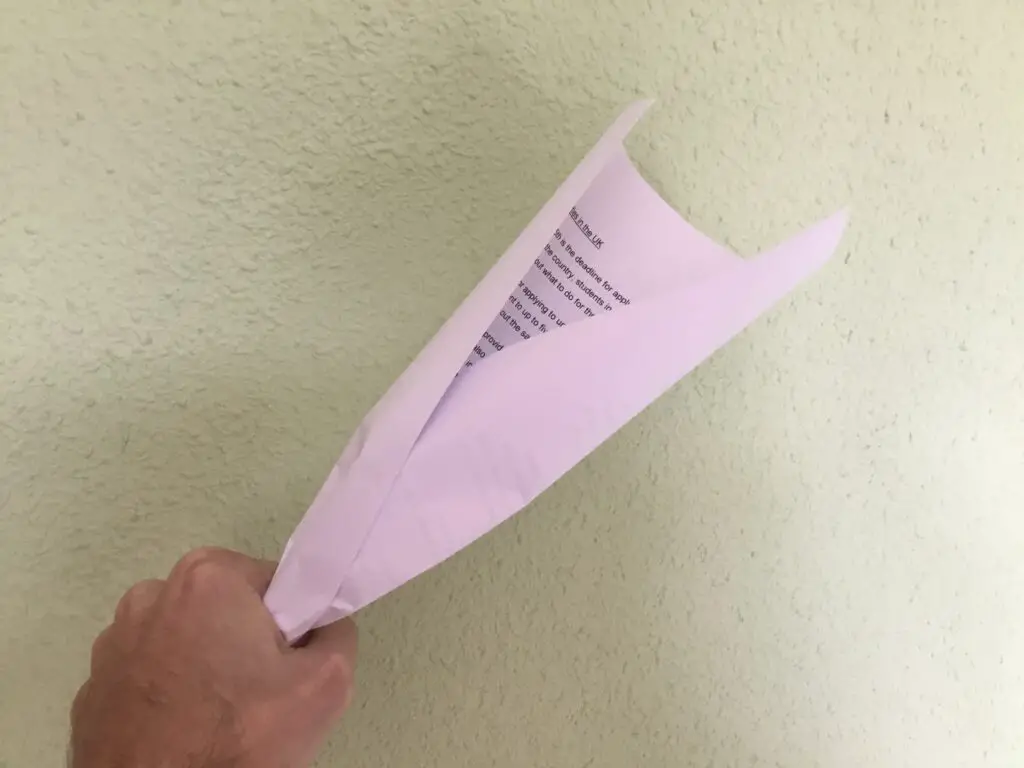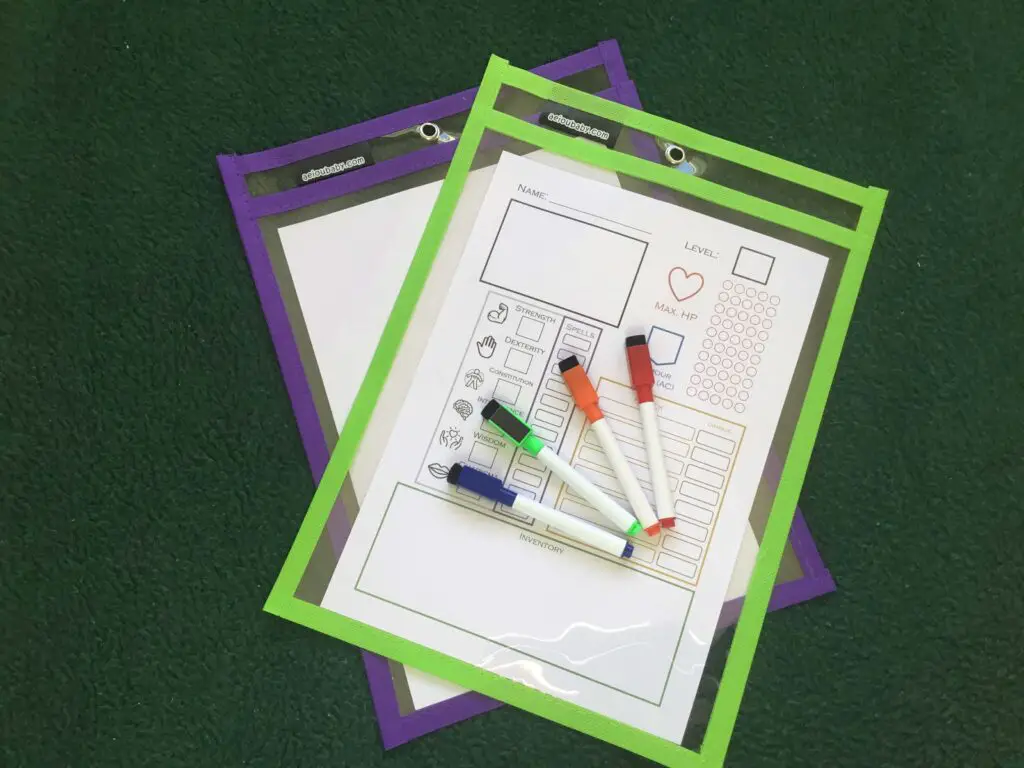You’re looking for engaging, low-prep and easy to explain games that practice vocabulary in the EFL/ESL classroom.
And this is the right place!

- Hot Potato
- Memory Chain
- Board Races
- Chain Comparisons
- Pass the Bomb
- STOP
- Swat the Word
- Hot Seat
- Basketball Vocabulary
- The Chameleon
I’ve made this list of favourites based on my own experience of teaching big classes, small groups and individuals. There’s something for everyone here, and most games can be adapted to any situations.
None require elaborate equipment or extended preparation. In fact, you can play most of them without any prep at all!
The games on this list are just a small section of what I have to offer. You can get my free ebook of 20 EFL/ESL games with detailed instructions and expert tips by signing up to the Enchanted ESL Newsletter.
So here is my list of the 10 best fun and easy vocab games for EFL/ESL. Let’s go!
1. Hot Potato
Hot potato is my go-to game for the final 5-10 minutes of a class when I want to consolidate vocabulary in a specific category. It’s lightning fast, and fun for all ages. It works best with groups of 4-10.
Estimated time: 5-10 minutes
Energy level: 4/5
Materials: None
How to play
Arrange the players in a circle.
Choose a category which has plenty of words, for example: animals, food, clothes, etc.
The first person takes the imaginary hot potato and mimes juggling it with both their hands so they don’t get burned.
They say a word in the category, then pass the hot potato to the player on their left. Likewise, that player has to say a word in the category before passing it on, and play continues around the circle.
If a player repeats a word already said, or can’t think of a word in a reasonable time (5-10 seconds), they are BURNED. This means they only have one hand to juggle the potato. If they get burned again, they have to juggle the potato on their head only.
Any more burns, and they’re out of the game.
Keep playing until only one player remains, or you run out of time.
There are a few variations of this game I’ve seen online. You can play it with a ball, tossing it from one person to the next, but I find this is a big distraction from the vocabulary. Instead, my students play with an imaginary hot potato.
Using an imaginary potato works because nobody will drop it, and it doesn’t become the centre of attention.
Making a big deal of the potato being scalding hot is a fun way to get students invested, and having to think fast makes it a high-energy game.
TIPS
- Take part yourself and introduce new vocabulary when it’s your turn.
- It can be difficult to remember which words have already been said, so apply the benefit of the doubt if you’re not sure.
- Kids love standing up and being active with their potato juggling.
- Encourage students to think of a word when it’s not their turn so they don’t draw a blank. This also speeds up play.
2. Memory Chain
Estimated time: 10-15 minutes
Energy level: 3/5
Materials: None
How to play
Organise the students into a circle.
Start the chain with a starter sentence, e.g. “I went to the park, and I saw ________”. As the teacher, you can start the chain by supplying the first word/phrase. Let’s say “some ducks”.
The person to the left then repeats the starter sentence and adds their own word/phrase to the chain. For example, “I went to the park and I saw some ducks and a big dog.”
This continues, with each student adding something extra until the chain is so long, people can’t remember it from start to finish.

This game features in my article on How to Use Gestures to Embed Vocab in EFL/ESL because it allows the establishment of physical hooks for deeper memorisation.
Even without gestures, it’s a wonderful way to practice vocab. It’s suitable for all ages and levels, and works best with groups of 2-8.
I like to treat this game as a collaborative effort rather than a competition. When a student is struggling to remember, allow the others to assist by providing gestures as reminders.
With gestures, you can create much longer memory chains. As you do, the students get more and more invested in remembering every word.
TIPS
- Focus vocabulary by modifying the starting phrase. Learning about food? “I went to the supermarket and I bought ________”. What about sports? “I was watching the Olympics and I saw ________”.
- Praise students for introducing more advanced vocabulary rather than sticking to things they’re already confident with. In fact, you could ban some words for being too easy.
- With more advanced students, encourage them to say phrases like “a pack of hungry dogs” rather than “a dog”.
3. Board Races
Estimated time: 10-20 minutes
Energy level: 5/5
Materials: Whiteboard/blackboard and markers/chalk and a timer
This is a well-known game for EFL/ESL teachers, and when it works, it’s brilliant. But beware, it can get out of control.
How to play
Divide the class into 2-3 groups. The number of groups you can have depends on how many people can write on the board at the same time with plenty of space between them.
Clear a route from the rear of the classroom to the board, so students can run back and forth.
Divide the board so each team has their own area. Line up the teams at the back of the class, making sure they’re all touching the wall (or behind a line on the floor).
Choose a category with plenty of words in it, e.g. food, clothes, places in the city, etc.
The game will proceed with one player at a time from each team running to the board, writing a word in the category, and running back to tag in the next player. Students should leave the writing equipment by the board rather than taking it with them. Start the timer for five minutes and let them go.
As the teacher, you have to do some refereeing – make sure players are only writing one word on their turn and that players remain at the back of the class when it’s not their turn. Shouting out words is allowed.
When the timer finishes, count the words each team has written. One point for a correct word, half a point for misspelled words. Most points wins.
Only use this game with students who are willing to run a lot. It’s very intense. Most adults and older teens will not want to take part. Groups of 6-16 are best.
As you can imagine, this game is chaotic. It also puts students in direct competition with each other, something which inevitably results in cheating and complaints of “it’s not fair”.
To avoid this getting out of hand, have a word with the students before the game. Let them know winning isn’t a priority. Obviously they want to get the most points, but there should be no prizes for winning, and you should strongly discourage any gamesmanship or gloating.
TIPS
- If you have a gym hall or playground available, play a variation with pen and paper on a table instead of a board. This gives you more space than a classroom. Plus, you don’t have to rearrange everything before and after.
- To avoid collisions, create lanes for the runners – one for going to the board and one for returning. Over-excitement can lead to clashed heads (I know from experience).
- Sometimes students write so fast, the words are illegible. If you can’t read it, don’t award a point.
4. Chain Comparisons
Estimated time: 2-3 minutes (can be repeated)
Energy level: 4/5
Materials: Timer
This game features on my list of 9 EFL/ESL Speaking Games & Activities Perfect for Beginners. However, you can use it for students of any level in groups of 4 or more, children or adults.
How to play
Organise the class into a circle or line to show a clear order. Establish how things will be compared e.g. size: bigger/smaller. Start a timer for 2 minutes.
Teacher starts with a word, for example: “car”. The first student in the order has to say something bigger than a car. They might say, “house”. The following student now has to say something smaller than a house, e.g. “cat”. Then the next says something bigger than a cat, the following something smaller, and so on.
Repetition is not allowed. Count how many correct words they come up with before the 2 minute timer ends – that’s the class score.
Time pressure can be stressful for some, so gauge your class and remove that element if it’s causing issues.
Other things you can compare with are cost: cheaper/more expensive; speed: slower/faster; age: younger/older and many more.
TIPS:
- Make a note of the score each time, and try to improve when you repeat the game (My students are always after a new high score).
- Vary the time limit depending on the class level. If they know very little vocab, reduce the timer to one minute, or 90 seconds.
- If you have a big class, extend the time limit so each student gets multiple turns.
- Encourage the students to think of a few answers before their turn, so they’re ready to say something. If they don’t, the pressure can make their minds go blank.
- If students shout out answers when it’s not their turn, you can deal with it by stopping the timer, deducting points from the class total, or removing them from the game. Alternatively, encourage them to help each other (as long as they allow the person whose turn it is to think first).
- Join in the order yourself to introduce some new vocabulary on your turn.
5. Pass the Bomb
Similar to Hot Potato, this game makes students think fast. It’s suitable for all ages and levels, and works best with groups of 3-8.
Estimated time: 10-15 minutes
Energy level: 4/5
Materials: Bomb timer (timer which “explodes” at a random time)

How to play
Get all the players in a circle. Decide a category which has plenty of words, e.g. countries, body parts, sports, etc.
Start the random bomb timer. Go around the circle with each student saying a word from the category. The person whose turn it is when the bomb goes off is the loser of that round. Write a B by their name (later O, M and B).
When someone has all 4 letters of “BOMB”, they lose and the game ends. The player with the fewest letters wins.
Pass the Bomb is a game you can buy. It comes with a bomb timer which you set, then it explodes at any point between 20 and 120 seconds.
You don’t have to buy the game, though. You can come up with your own categories or scenarios and use this free timer in your browser.
Sometimes, the bomb might go off and it’s not clear whose turn it was at the time (especially if they’re going quickly) and this causes problems. If you think this might happen, remove the scoring system. Reduce the pressure to win, and let students enjoy the game rather than feeling stressed.
TIPS:
- For advanced students, choose scenarios like “things you’d find in a lake”, or “jobs that require a special uniform”.
- It may be worthwhile to use a ball to indicate whose turn it is. While it may get dropped or thrown too violently, it can avoid debate over who exploded.
- Make it clear to students that losing doesn’t mean your English is bad – it’s pure luck when the bomb goes off.
6. STOP
STOP requires production of vocabulary in several different categories. It has a sister game called Scattergories (described as a variation below).
Estimated time: 5 minutes per round
Energy level: 3/5
Materials: Writing equipment, timer (optional: random letter generator)
You can play it with 4 or more students. It won’t work too well with young children (8 or under) or students with very limited vocabulary.
How to play
Divide students into 4-6 groups (students can play as individuals in small classes). Each group needs writing equipment. A4 paper and a pencil are fine, although I’d recommend A4 dry-erase pockets if you can get them.
Decide on 6 categories, e.g. sports, food, body parts, etc.
Choose a letter. You can do this with a random letter generator, or by saying the alphabet quickly in your head and having one of your students shout STOP! Then you use the letter you’d reached in your head.
Set the timer for 3 minutes. When you say “go”, the groups must write down a word beginning with the chosen letter for each category.
At the end of the 3 minutes, shout “STOP!” and everyone must stop writing.
Each group passes their answers to the group on their left for marking. Taking each category in turn, have the groups read out the answers.
When all the answers have been read out, do the scoring. One point for each correct unique word (that no other groups wrote) and half a point for correct words which were repeated by another group. Do this for all categories and add total the points – the team with the most points wins.
The scoring system encourages students to think of less common words. If the letter is “D” and the category is “animals”, writing “dog” isn’t the best option as other students might have the same. Instead, “deer” or “dragonfly” might score maximum points because nobody else thought of them.
You can adjust the difficulty for more advanced students by choosing challenging categories and difficult letters.
TIPS:
- Before starting the timer, have each group write down the category headings.
- If the letter is something like X or Q, choose a new one. With lower-level groups, you can exclude some other letters, like J, Z and W, if you think they’ll be too hard.
- For advanced students, challenge them with subcategories. Instead of “food”, choose “dairy products”.
Scattergories variation
In Scattergories, instead of writing down ONE word for each category, players write as many as they can. Points are given for each word they get in a category. Unique answers still earn 1 point, while answers repeated by other groups earn half.
7. Swat the Word
Swat the Word works best with beginner to intermediate level students and any class size except individuals.
Estimated time: 15-20 minutes
Energy level: 3/5
Materials: Fly swats OR rolled up sheets of paper, whiteboard/blackboard
If you have some fly swats, or can get them easily, students love them. If not, take some scrap paper, roll it vertically and squeeze one end to make a paper stick – easy to make and less likely to result in students “accidentally” swatting others in the class.

How to play
Write at least 20 words on the board. Two students stand by the board. The teacher says a description of one of the words, and the students have to “swat” the word first.
If they swat the correct word, they get a point. If they swat the wrong word, they aren’t allowed to try again, and the other student can take their time. Pushing, blocking, or any other physical contact is illegal.
This game is perfect once you’ve brainstormed a whole load of words on the board in a vocab elicitation.
To learn more about vocab elicitation, read my article How to Elicit Vocabulary in EFL/ESL: 7 Effective Activities.
The competitive aspect of this game can cause some issues, depending on your class. It can be too much for some. However, if everyone knows the rules and the stakes aren’t too high, it’s great fun.
TIPS:
- In a large class, divide the students into two teams and have one representative from each team come up at one time.
- Don’t remove words even if they’ve already been swatted.
- If you’re in a small class without a whiteboard, use a piece of paper as the board, and the end of a pen as the “swatter” – you could call it Word Jab instead of Word Swat.
- Word your descriptions carefully. Ideally, you’ll have related vocabulary in which one part of the description applies to many, e.g. “It’s an animal with four legs…”, “it lives in the jungle”, “and it’s orange and black”. Each part of the description gives an extra clue and narrows it down. This means the students have to listen well.
8. Hot Seat
This may be the most well-known game on this list, and most EFL/ESL teachers will have at least heard of it, if not used it in their classes.
Estimated time: 20-30 minutes
Energy level: 4/5
Materials: Pre-prepared words or pictures (presentation, or flashcards), timer
To get the best out of this game, you’ll need at least 4 students. They should be able to make simple sentences. Absolute beginners will struggle.
How to play
Split the students into teams of 2-4.
One player from the first team is nominated to sit in the Hot Seat. They position themselves so they can’t see the words/images (usually sitting with their back to the board).
Start the timer for 1 minute.
Show the flashcards or the presentation. The other members of the team have to describe the word on the flashcard/presentation without saying the word itself.
The player in the Hot Seat has to guess what the word is. When they get it right, they get one point. If they’re struggling, they can choose to pass to the next one.
If one of the team members not in the Hot Seat says the word, the team forfeits the point and moves on to the next word.
When the time is up, total how many points they got, and move on to the next team.
You’ll need plenty of words/pictures for this game, as they’ll get used up quickly. Big sets of flashcards are great. If you don’t have them, print your own, or put together a presentation with 100+ words/pictures on individual slides.
I like to use images to accompany the word. pictures are a powerful tool for memorisation, something you can learn more about in my article How to Use Images for Deep Vocab Memorisation in EFL/ESL.
TIPS
- With a large class, opt for teams of 4, so there aren’t too many teams to keep track of.
- Use this game to consolidate target vocabulary.
- Make sure all team members who aren’t in the hot seat get the opportunity to speak. Often, one confident student can take charge. If you see this happening, force them to take turns describing words.
- If players keep repeatedly passing until they get one they find easy, introduce a rule that deducts a point for each passed word.
9. Basketball vocabulary
Not the most sophisticated vocabulary game, but one that’ll get your students engaged and can even be used to elicit some advanced words.
You can play this game with any class size and any level.
Estimated time: 5-20 minutes
Energy level: 4/5
Materials: Ball, hoop (or other receptacle like an empty box)
How to play
Set up a basketball hoop or something which players can throw a ball into (empty boxes work fine). Draw a clear line where the players throw from.
Choose a vocabulary category with plenty of words, e.g. things in the house, jobs, action verbs, etc.
Players come up one at a time and say a word in the category. Decide the level of the word based on how obscure and challenging it is, and award it a value from 1 to 3.
1 is for basic words (e.g. doctor), 2 is for moderately challenging words (e.g. journalist) and 3 is for difficult and obscure words (e.g. optician).
The players have to throw the ball at the hoop/box. If they get it in, they get the number of points corresponding to the value of the word they gave (1-3). If they miss, they get no points.
You can play this game with each student playing for themselves, or divide the class into teams for a bit of competition.
As you can see, this game rewards students who come up with more advanced vocabulary.
You can adapt this game to suit your materials. Don’t have a ball? Scrunch up some paper and use that. You can even turn the game into bowling, football, or any other target-based sport. Just be careful not to lose sight of the vocabulary practice.
TIPS
- Make sure it’s relatively easy to get the ball in the hoop/box – you want around half of throws to go in.
- Write the vocabulary students give on the board to create an elicited wall of words.
- Let players and teams prepare words while they’re waiting, even looking them up in a dictionary or textbook.
10. The Chameleon
I love this game. Not only does it practice vocabulary, but it also gets students thinking creatively about how they use those words.
Estimated time: 10-20 minutes
Energy level: 2/5
Materials: The Chameleon board game
Honestly, the best way to explain the rules of this game is visually. There are quite a few rules that are difficult to get across in text form alone, so I recommend you watch this video I made on how to play.
You need a group size of 3-8, and students should be at least 10 years old.
I really like the selection of vocab cards you can choose from, and the fact there’s a blank one where you can fill in the words you want to study. All my classes love this game, and it’s endlessly replayable.
The downside is you have to pay to get the game, and it’s not available in all countries. However, if you’re feeling up to it, make your own pen-and-paper version for free!
TIPS
- Play a couple of practice games for students to get used to how the dice work and what kind of words they should say.
- Don’t force students to discuss other people’s words. They may be reluctant to give away too much information. This game is about vocab, not speaking fluency.
- Take part yourself – students love trying to catch you out!
The best equipment for vocab games
If you have a large whiteboard or blackboard in your class, this is the best resource you have. A projector? Even better.
Not everyone has this luxury, though, especially with smaller, private classes. What I’ve found works brilliantly with smaller groups (and to an extent with bigger classes, too) are A4 dry-erase pockets.

These are transparent plastic sheaths which hold A4 paper. If you slide a blank sheet inside, you’ve created a lightweight, portable mini-whiteboard.
What’s more, you can put a scoreboard, template or worksheet inside. This saves on printing, as students can write on the pocket, then erase when they’re done, allowing another student to use the sheet.
Adjust and alter
There you have 9 high-energy vocab games. Some of them will work perfectly with your students exactly as I’ve described them. Others might not be so well suited. In that case, adapt them.
The rules and tips provided are guidelines. You know what’s best for your class, so take what works and change what doesn’t. Experiment a little. Come up with new games and variations – students are often happy to get involved trying new things!
And you can learn new games by getting your hands on my free ebook of 20 EFL/ESL games. All you have to do is sign up to the Enchanted ESL Newsletter, where you’ll also get access to loads more exclusive resources and receive monthly emails full of role-play scenarios, lesson plans and more games!
For all the information you could ever possibly want on teaching EFL/ESL vocab, take a look at all my articles on the topic.
BIG OVERALL GUIDE: Best Method to Improve EFL/ESL Students’ Vocabulary: 9 Steps
Why EFL/ESL Students Forget Vocab: Causes and Solutions
How to Elicit Vocabulary in EFL/ESL: 7 Effective Activities
What Vocab Should You Teach in EFL/ESL: Organic acquisition
How to Use Images for Deep Vocab Memorisation in EFL/ESL
How to Use Gestures to Embed Vocab in EFL/ESL + 2 Games
How to Test EFL/ESL Vocabulary: Best assessment methods
Sounds and Audio Hooks for Lasting Memorisation in EFL/ESL
How to Teach Vocab in EFL/ESL with Memorable Moments
Supercharge EFL/ESL Vocab With Spaced Repetition (Anki)
How to Make Vocab Last Forever: Reinforcing connections
9 High Energy EFL/ESL Games for Boosting Vocabulary







